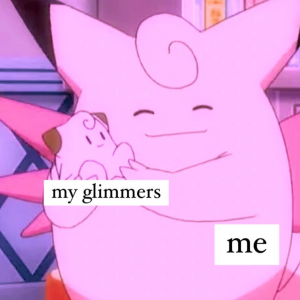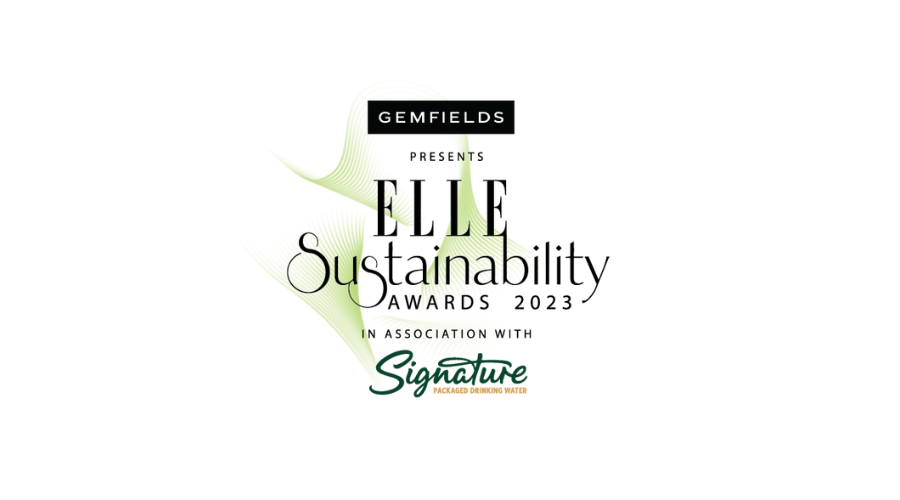You know that feeling when you take in the scent of the earth after the first rain? The tiny fluttering in your heart. Or when you’re all warm and cozied up in your blanket on a cold, winter night. That feeling that you can’t really put your finger on but you know it feels good. Well, there’s a word for it now, those little moments are known as glimmers. Popularly known as the opposite of triggers, here’s all you need to know about internet’s latest feel good technique.
When I first came across the term glimmers, I went down a rabbit hole – and an hour was spent watching videos filled with sunsets, rainbows, rain, coffee and every other beautiful thing I could think of. I was instantly drawn to the concept. After doing my research (a lot of google searches, basically), I decided to give it a shot and tried identifying mine.

Glimmers as a concept gained massive popularity on TikTok last year. It was introduced by Deb Dana, an American therapist in her work about Polyvagal theory – the psychological concept dealing with emotional regulation and social engagement. She refers to glimmers as micro-moments of safety.
They are tiny moments that we encounter in our everyday life that makes us feel joy, connection, safety, peaceful and all other kinds of positive emotions.
We usually associate happiness in our lives being brought about by big, grand moments such as an acceptance letter from your dream college, marriage, getting promoted, or events of parties and social engagements. The in-betweens are way more important though; these are tiny moments of unexpected joy can have a mundane day looking up.

Glimmers evoke feelings of safety and connectedness within an individual. This can be a solo experience such as spotting a rainbow on way to work, or something that you share with another, think of exchanging a sincere smile with a stranger, or hugging a loved one.

What is the connection between triggers and glimmers?
The word ‘trigger’, much to any therapist’s dismay, has seeped into common parlance. While this may be seen as a positive in terms of awareness, more often than not, it takes away from the gravitas of the word. Triggers are associated with trauma – emotional, physical, psychological. Triggers are any sensory stimuli, that causes upheaval in emotional regulation and causes a state of distress, alerting the nervous system putting it into fight, flight, freeze mode.
Just like triggers, glimmers also affect our nervous system, however in the opposite way. Glimmers regulate our nervous system and emotional state, while stimulating a rest response. Glimmers leads to biological sense of connectedness and emotional regulation. Glimmers awaken a response in the parasympathetic nervous system , the part of nervous system is responsible for the regulation of emotions. Actions performed by parasympathetic nervous system are also termed as ‘rest and digest’. Glimmers send a cue of safety to out nervous system and strengthens it.
According to Deb Dana, we have to make an effort to notice glimmers in our daily life, as we are more likely to notice negativity around us, due to our innate survival instinct. So our bodies are wired to make us feel sad and pathetic!
*Sigh*
Luckily, glimmers exist. They are saviours for our mental health. They are used as a therapeutic technique, especially for individuals with PTSD, but are beneficial for all, and therefore psychologists are encouraging their inclusion in day to day life.

Big question time – How do I find my glimmers?
Make your self a perfect cup of coffee or tea when you are stressed, get some sun, bask in nature, invest in your favourite scents, wrap yourself in a softest blankets, smile at a stranger (in a non creepy way).
There isn’t a one size fits all approach for glimmers. They are different from everyone. A moment that makes you feel calm and happy, might not deliver similar results for all. It becomes that much more important then, to identify your own glimmers.
The smell of coffee while pulling off late nights, the sound of my mother praying in the wee ours of morning, the smile my best friend gives me every time we meet, are some of my favourite ones. These are the ones I have identified so far. These fleeting moments have helped me ground myself and be connected to my surroundings, offering a moment of calm on chaotic days.
Make a list of what makes you happy, set alarms – morning, noon, evening to detect them, add little things to your to do list, and then start deliberately noticing your happy moments. Glimmers are all around us, waiting for us to pick them.

Feeling sad and disconnected as a part of human experience just as much as anything else is, and perhaps every once in a while its okay to not be okay. However when the sadness becomes too much, there are little activities that we can use to set the world straight on its axis.
Also read, World Mental Health Day: 9 Experts Share Positive Quotes To Help You Get Through The Day
























